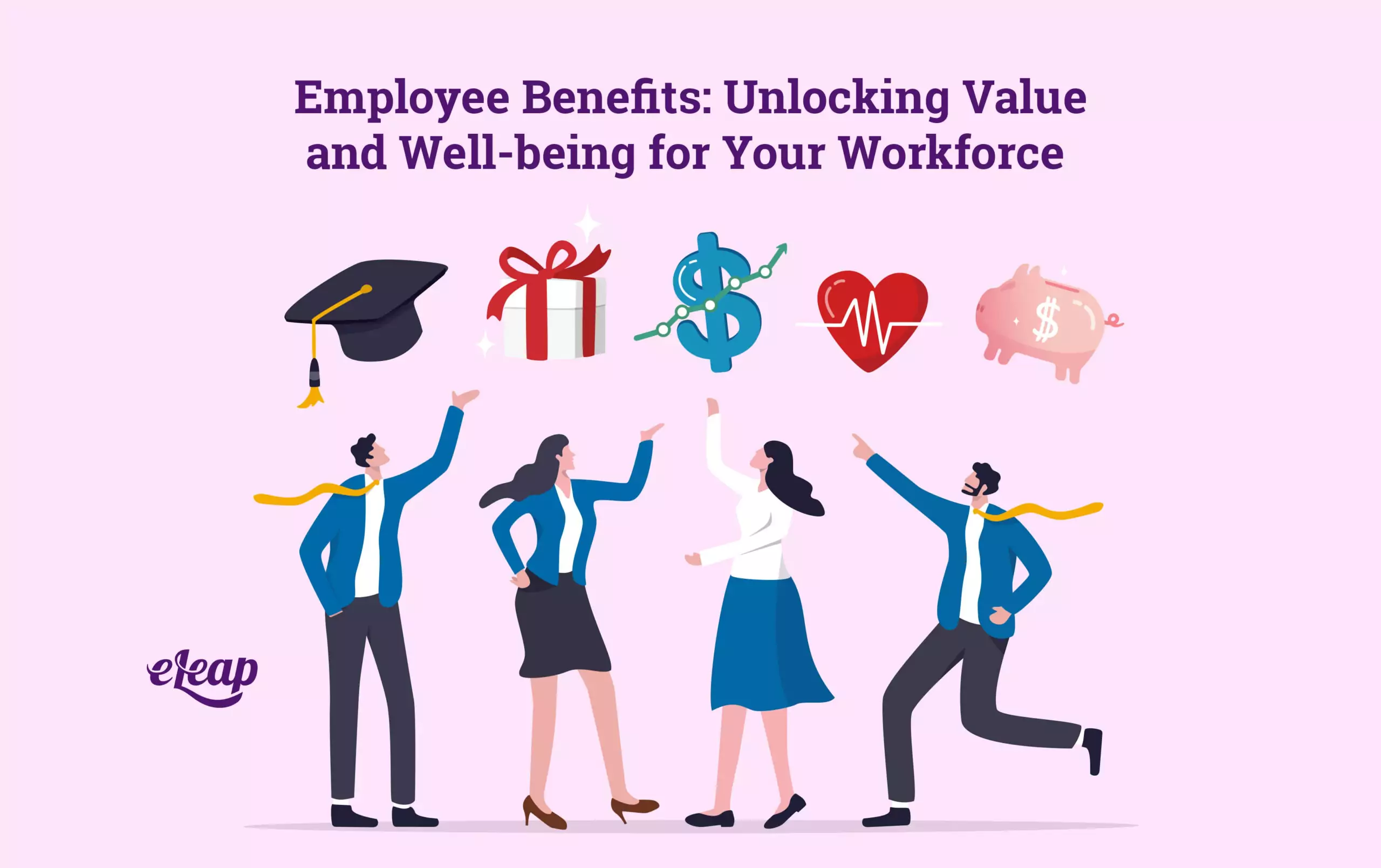Employee Benefits: Unlocking Value and Well-being for Your Workforce

Employee benefits are non-wage compensation employers provide to their employees in addition to their regular salaries or wages. These benefits are designed to enhance employees’ overall job satisfaction, well-being, and financial security. Here are some common types of employee benefits:
Health Insurance: Employers often provide health insurance coverage, which helps employees cover medical expenses, including doctor visits, hospital stays, and prescription medications.
Dental and Vision Insurance: These benefits cover dental and vision care services, including routine check-ups, dental procedures, and eye exams.
Retirement Plans: Employers may offer retirement plans, such as 401(k) or pension plans, where employees can contribute a portion of their earnings to save for their retirement, often with an employer match.

Paid Time Off (PTO): This includes vacation days, sick days, and holidays, allowing employees to take Time off while still receiving their regular pay.
Flexible Spending Accounts (FSAs) and Health Savings Accounts (HSAs): These accounts allow employees to set aside pre-tax dollars for medical or dependent care costs.
In today’s competitive job market, companies strive to attract and retain top talent. One key strategy to achieve this is offering enticing employee benefits. These benefits enhance an employee’s well-being and contribute to a positive work environment. This article dives into Employee Benefits, exploring their various types, advantages, and frequently asked questions. Let’s delve into how these perks are more than just added extras—they’re essential to a successful organization.
Employee Benefits: A Holistic Approach to Well-being
Employee Benefits encompass a wide range of offerings companies provide to their employees beyond their regular wages. These benefits go beyond financial rewards and are designed to improve an employee’s quality of life, boost morale, and promote work-life balance. They can include health insurance, retirement plans, paid Time off, and more.
Exploring the Diversity of Employee Benefits
Employee benefits come in various shapes and sizes, catering to the diverse needs of today’s workforce. Some of the most popular types of benefits include:
Health and Wellness Benefits
Taking care of employees’ physical and mental health is a top company priority. Health insurance, gym memberships, wellness programs, and access to counseling services are some benefits that fall under this category. These benefits contribute to a healthier workforce, reduce absenteeism, and increase productivity.
Retirement Benefits
Helping employees secure their financial future is crucial. Retirement benefits, such as 401(k) plans and pension schemes, enable employees to save for retirement while enjoying potential employer contributions. These benefits provide peace of mind and help attract employees looking for long-term stability.
Flexible Work Arrangements
Work-life balance is highly valued by employees. Offering flexible work arrangements, such as remote work options or flexible hours, can significantly improve job satisfaction and reduce stress levels. Employees appreciate the ability to tailor their work schedules to their personal lives.
Professional Development Opportunities
Investing in employees’ growth benefits them individually and enhances the company’s overall capabilities. Tuition reimbursement, skill development workshops, and career advancement programs are all examples of benefits that foster continuous learning and professional growth.
Family-Friendly Benefits
Supporting employees in their family responsibilities can strengthen their commitment to the company. Family-friendly benefits like parental leave, childcare assistance, and adoption benefits acknowledge the importance of work-family balance.
Financial Benefits
Financial wellness is integral to employees’ overall well-being. Companies can offer benefits such as financial counseling, employee stock purchase plans, and even interest-free loans to help employees navigate their economic challenges and goals.
Maximizing the Impact of Employee Benefits
The benefits mentioned above aren’t just perks; they profoundly impact both employees and the organization as a whole. Here’s how:
Enhanced Recruitment: A comprehensive benefits package can attract top-tier candidates, making your company more appealing in a competitive job market.
Improved Employee Retention: Employees who feel valued and supported through benefits are likelier to stay loyal to the company, reducing turnover rates.
Increased Productivity: Health and wellness benefits contribute to healthier, happier, more engaged, and more productive employees.
Positive Company Culture: Employee benefits reflect a company’s values and commitment to its workforce, fostering a positive and inclusive company culture.
Frequently Asked Questions (FAQs)
What are the most common employee benefits?
Standard employee benefits include health insurance, retirement plans, paid Time off, flexible work arrangements, and professional development opportunities.
How do employee benefits impact recruitment?
A comprehensive benefits package can make your company more attractive to potential candidates, increasing your chances of hiring top talent.
Do all companies offer the same employee benefits?
Employee benefits vary widely based on the company’s size, industry, and culture. Companies tailor their benefits packages to suit their employees’ needs.
Can employee benefits really improve employee well-being?
Employee benefits like wellness programs and mental health support can significantly improve employee well-being, leading to higher job satisfaction and overall happiness.
Are employee benefits only about financial rewards?
No, employee benefits go beyond financial rewards. They include offerings that cater to employees’ physical, mental, and emotional well-being, such as health insurance, flexible work arrangements, and professional development opportunities.
How do family-friendly benefits impact employees?
Family-friendly benefits, such as parental leave and childcare assistance, show that the company values employees’ family responsibilities, fostering loyalty and reducing work-related stress.
Conclusion
Employee benefits are not just additional perks but powerful tools that contribute to a company’s success.
By prioritizing employee well-being and offering diverse benefits, organizations can create a positive work environment that attracts, retains, and nurtures top talent. Remember, employee benefits are investments that yield both short-term and long-term returns—a win-win situation for both employees and employers.